Pernille Ripp's Blog, page 48
November 17, 2016
What Do We Do Now
On Tuesday the video highlighting the amazing work my students do was released by Microsoft to the world. On Tuesday I went to Youtube to watch it. On Tuesday, I saw the comments left below it. “Indoctrination…Lose her job…Islam is evil…” My heart sank and my first reaction was to ask Microsoft to please close the comments to shield my students. To shield them from the hate of others who do not seem to see the bigger picture. From those that are bound and determined to spread more hate. It seems we have seen a lot of this lately, even more than we have in a long time.
But I didn’t send the email. I didn’t ask for the comments to be closed. I didn’t ask for my students to be shielded from this hate because this is the world we live in. One that is filled with many opinions, some so hateful they make me angry, and yet, my job is not to shield at all cost. My job is to educate.
So how do we fight back? We continue to educate. We show both sides and not in its ugliest, but in a way that will show our students that their job is to find their own opinion and the only way they can do that is by learning, by reading, by trying to understand things that they may not agree with
So we continue to educate and then we stand up for what we believe in. We stand firm on the shoulders of righteousness, of love, of unity, of belief in other people, even those that are different from us. Even those that we do not understand. Parts of our country may feel like our country is broken, I know I certainly do, so we must stand even firmer and continue to pave the way toward a nation that comes together not through our fears but through our hopes for a better future. One where we do not just point out all of our differences and how we think others are wrong, but one that we can see how we are similar. Fear unites those that fear. Hate unites those that hate. But so does love, and a love that is determined to conquer even hate is not one to count out.
I refuse to be afraid of the future that lies ahead of our nation because I know that as educators we can present the facts. We can create opportunities for our students where they are presented with information that is not laced by fear or filled with hatred and then allow them to choose their own opinion. We can use technology and outreach so that students will meet other people that dispel the myths we carry.
The road ahead may seem long. The road ahead may seem like it will lead us down a dark rabbit hole where we are not sure what is waiting for us on the other side. But we have knowledge. We have the power to bring the world in so that our students may experience more than what they are told to believe form those whose voice are filled with hate.
I refuse to be afraid, for I am emboldened. We can continue to work toward the future we have always envisioned, that has not been taken away from us. Don’t let anyone tell you otherwise.
Filed under: being a teacher


November 16, 2016
Making the World Kinder
Two weeks ago, we had the very surreal experience of having a professional film crew in our classroom filing us. To be put under the microscope in such a way is odd to say the least, yet, it was business as usual here in room 235D. We had learning to do, explorations to have, and so our days continued, film crew or not.
I did not know at first which angle Microsoft would take on their video highlighting cloud technology in the classroom, but just knew they wanted to see what we do. To say that I am proud of the final result is an understatement. I am so proud of how my students are growing, I am so proud of how they question the world, seeking their own conclusions and figuring the world out.
Yesterday the president of Microsoft, Brad Smith, tweeted our video out.
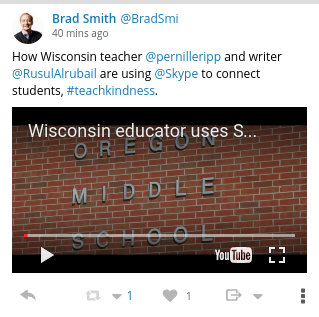
So here is a peek into our classroom, thank you Microsoft for giving me a way to show the world the power of kids and technology.
Filed under: being a teacher


November 12, 2016
A Few Tips From a Parent for Better Parent-Teacher Conferences
‘Tis the season of parent teacher/conferences, not just for me as a teacher, but also for our three school-aged children. Having been on both sides of the table now for a few years, I have been thinking about how we as teachers can use the parent perspective to prepare well. So here are a few tips for better parent/teacher conference from a parent’s perspective.
Send home a questionnaire beforehand.
All three of my children’s teachers did this and it allowed us to really think about what we were hoping to hear about at their conference. We knew that my husband would be the only one present and so we could discuss beforehand what was important to both of us. We then sent it back a few days before so the teacher had time to prepare. Simple questions such as; what would you like to know more about or what concerns do you have if any will do the trick.
Have the child evaluate if they are not present.
While I am a firm believer in student-led conferences, if that is not a possibility have the children self-evaluate beforehand and also invite them along. Thea had circled her answers on her own behavior and work habits and it was great to see the self-reflection.
Start with the praise, sure, but be realistic too.
While I would love to know all of the great things about my child, I certainly need to know where their areas of growth are, even if it as hard conversation to start. More than likely the teacher will not say something surprising. We know children act differently often at school and home, so let me know what the school version of my child is, even if it is a kid that does not make the best of choices.
Give us specific things to work on with them.
While there may be many things our child needs to work on, give us a few specific things. We know that one child really needs to work on his pencil grip and his letter recognition, while another needs to work on chunking and handling frustration more easily. While we know there are many goals we can work on with them, these are the ones that take priority right now.
Give us tools.
I was so impressed with the tools we were handed by our children’s teachers. From math program logins to the computer, to cut out letters, we now have specific tools we can use with our children as we support their further learning.
Allow it to be recorded.
Our children’s conferences were on the days that I had to give conferences so my husband asked if we could record the conversation on his phone. That meant I did not have to rely on his retelling but instead could hear the whole conversation. While I wish I could have been present to be a part of the conversation, this was the next best thing. I was so grateful to hear the whole conversation and not just the big parts.
Show us that you know our child.
This is something I am still working on with my many middle school children, but I try to show parents that I actually know their child just a little. Again, we were impressed with the care that our childrens’ teachers took with how they interact with them. It was clear that not only are they great teachers, but also great human beings that truly care about the kids they teach.
Let your enthusiasm shine through.
Even when we had to discuss a few not so great decisions or things to work on, it was clear that these teachers love their job and the kids they teach. Leaving a conference feeling like your child is in the best of hands is an incredible feeling. It also means that if these teachers have to have harder discussions with us about things our kids may have done or not done, we know that they are coming from a place of love.
I am so grateful to the stellar education all of my children are receiving and also to the way that their teachers communicate with us. While our children are by no means perfect, we know that every day they are in the best of hands; caring teachers who will challenge them and also be partners as we try to help them grow into even better human beings.
I am currently working on a new literacy book. The book, which I am still writing, is tentatively Passionate Readers and will be published in the summer of 2017 by Routledge. I also have a new book coming out January, 2017 called Reimagining Literacy Through Global Collaboration, a how-to guide for those who would like infuse global collaboration into their curriculum. So until then if you like what you read here, consider reading my book Passionate Learners – How to Engage and Empower Your Students. Also, if you are wondering where I will be in the coming year or would like to have me speak, please see this page.
Filed under: being a teacher


November 9, 2016
We Continue the Path
In an hour our oldest daughter, Thea, will wake up and ask us the inevitable; who won, mommy? We have not shielded her from the election, nor overtly exposed her to it. Instead she has picked up the commotion surrounding her piece by piece as kids have taunted each other on the playground and we have answered her many questions. Why do people like Trump or Clinton? Where will the wall be built? Why does it matter, mommy?
To a 7 year old the election is only a Tuesday night blip. An event out of the ordinary but soon forgotten. Yet as her mom, I keep thinking about the conversations that lie ahead, of what path our country will take now, of what questions she may bring home after she hears things on the playground.
I refuse to be afraid of the future that lies ahead. I have faith in the American people that we will choose kind even if those in office fail to do so. I have faith that our healing lies in our classrooms, where we will continue to teach all of the children, no matter their political beliefs, no matter their origins, no matter their stories.
While our presidents may define us outwardly as a nation, they will never define our classrooms unless we let them. Unless we choose to shape our morals based on the actions of someone else. It does not matter where your political affiliation lies; this election has changed us all, has brought a darker side to our united nation and it is now up to us to show the good that is America.
Our children may not care who sits in the Oval Office. Our children may not care about the political mudslinging or the decisions that are to come. We will, and yet we can teach such that we continue to focus on what we have always focused on; kindness, empathy, awareness and critical thinking.
America may feel like it has changed overnight, and yet it still looks a lot like the America I knew yesterday. It is still filled with good people, with dreams of a better life, of teachers who work tirelessly to help shape the future of our country. Of children who strive for knowledge and a place they can belong.
So do not stray from your path of goodness. Do not forget to teach the every day lessons of kindness, sharing, listening, and building community. We say that we as teachers help shape the future of of our country, we do, so now we shall continue down the path we have been walking for so long. One that focuses on unity. One that focuses on education for all. One that focuses on coming together, rather than apart.
Filed under: being a teacher, being me


November 5, 2016
Great Picture Books to Teach Plot
While I continue to update the other lists I have compiled of amazing picture books, a teacher asked me if I have any suggestions for teaching plot. Well, of course I do. I am so thankful once again to the amazing authors and illustrators that give us these incredible books to teach pretty much everything we need to in our literacy classes.
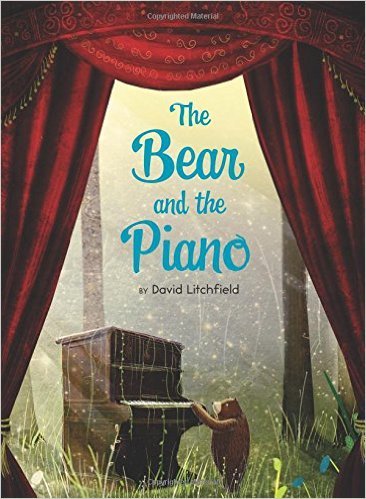
The Bear and the Piano by David Lichtfield is a book I use for plot and for theme.
Plot description:
One day, a bear cub finds something strange and wonderful in the forest. When he touches the keys, they make a horrible noise. Yet he is drawn back again and again. Eventually, he learns to play beautiful sounds, delighting his woodland friends.
Then the bear is invited to share his sounds with new friends in the city. He longs to explore the world beyond his home, and to play bigger and better than before. But he knows that if he leaves, the other bears will be very sad . . .
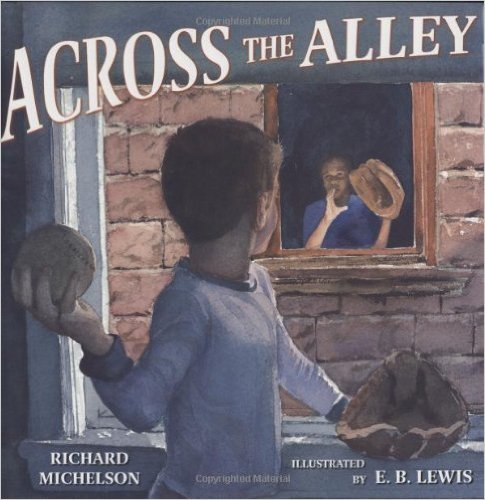
Across the Alley by Richard Michelson and E.B. Lewis is ten years old but still very relevant. This is also a great book to add to your social justice curriculum.
Plot description:
Abe and Willie live across the alley from each other. Willie is black and Abe is Jewish, and during the day, they don’t talk. But at night they open their windows and are best friends. Willie shows Abe how to throw a real big-league slider, and Abe gives Willie his violin to try out. Then one night, Abe’s grandfather catches them—will Abe and Willie have the courage to cross the alley and reveal their friendship during the day?

A Voyage in the Clouds by Matthew Olshan and Sophie Blackall is also on my Mock Caldecott watching list.
Plot description:
In the year and a half since the flight of the first manned balloon in 1783, an Italian has flown, a Scot has flown, a woman has flown, even a sheep has flown. But no one has flown from one country to another. John Jeffries, an Englishman, and his pilot, Jean-Pierre Blanchard, a Frenchman, want to be the first. On January 7, 1785, they set out to cross the English Channel to France in a balloon. All seemed to be going fine, until Jeffries decides the balloon looks too fat and adjusts the air valve―how hard could it be? Too bad he drops the wrench over the side of the aerial car. With no way to adjust the valve, the balloon begins to sink. Jeffries and Blanchard throw as much as they can overboard―until there is nothing left, not even their clothes. Luckily, they come up with a clever (and surprising) solution that saves the day.

Samson in the Snow by Phillip C. Stead is beautiful for many reasons.
Plot description:
One sunny day Samson, a large and friendly woolly mammoth, encounters a little red bird who is looking for yellow flowers for her mouse friend (whose favorite color is yellow). As she flies off with the flowers, Samson wonders what it must be like to have a friend. He wonders this for so long, in fact, that he falls asleep and wakes up to a world covered in snow. In the midst of a blizzard, Samson finds and shelters the little red bird and flower-loving mouse in a tender tale of kindness and unexpected friendship.
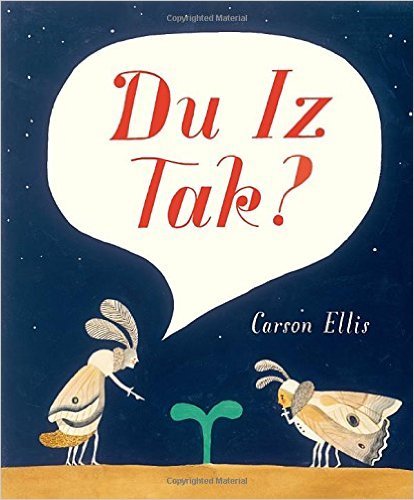
Du Iz Tak by Carson Ellis is also great for inferring.
Plot description:
Du iz tak? What is that? As a tiny shoot unfurls, two damselflies peer at it in wonder. When the plant grows taller and sprouts leaves, some young beetles arrive to gander, and soon—with the help of a pill bug named Icky—they wrangle a ladder and build a tree fort. But this is the wild world, after all, and something horrible is waiting to swoop down—booby voobeck!—only to be carried off in turn. Su! With exquisitely detailed illustrations and tragicomic flair, Carson Ellis invites readers to imagine the dramatic possibilities to be found in even the humblest backyard. Su!
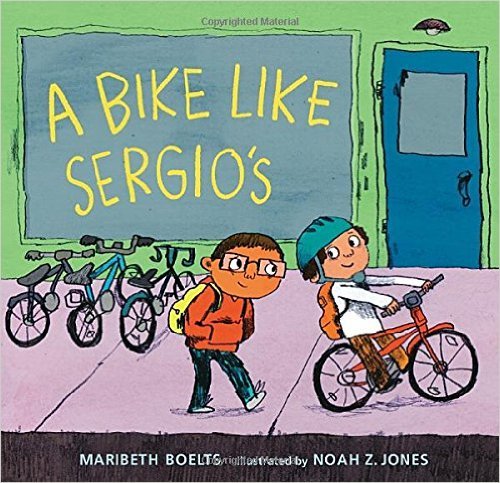
A Bike Like Sergio’s by Maribeth Boelts and Noah Z. Jones is fantastic for theme as well.
Plot description:
Ruben feels like he is the only kid without a bike. His friend Sergio reminds him that his birthday is coming, but Ruben knows that the kinds of birthday gifts he and Sergio receive are not the same. After all, when Ruben’s mom sends him to Sonny’s corner store for groceries, sometimes she doesn’t have enough money for everything on the list. So when Ruben sees a dollar bill fall out of someone’s purse, he picks it up and puts it in his pocket. But when he gets home, he discovers it’s not one dollar or even five or ten—it’s a hundred-dollar bill, more than enough for a new bike just like Sergio’s! But what about the crossed-off groceries? And what about the woman who lost her money?
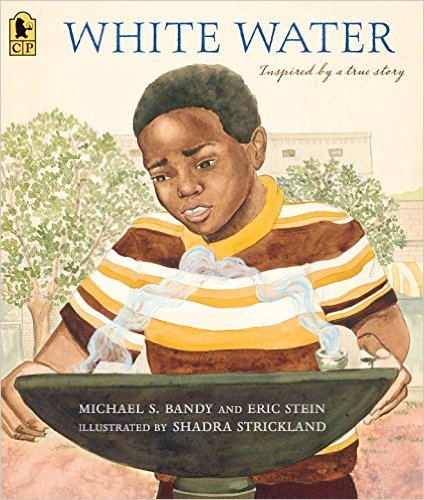
White Water by Michael S. Bandy, Eric Stein, and Shadra Strickland is another great book to discuss social justice.
Plot description:
It’s a scorching hot day, and going into town with Grandma is one of Michael’s favorite things. When the bus pulls up, they climb in and pay their fare, get out, walk to the back door, and climb in again. By the time they arrive in town, Michael’s throat is as dry as a bone, so he runs to the water fountain. But after a few sips, the warm, rusty water tastes bad. Why is the kid at the “Whites Only” fountain still drinking? Is his water clear and refreshingly cool? No matter how much trouble Michael might get into, he’s determined to find out for himself.
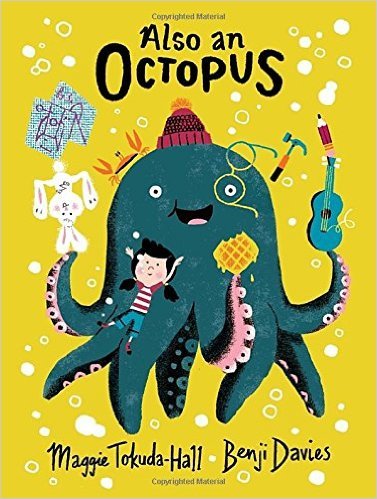
Also an Octopus by Maggie Tokuda-Hall and Benji Davies is one of the most perfect picture books for plots, this is the whole purpose of the book!
Plot description:
It begins with an octopus who plays the ukulele. Since this is a story, the octopus has to want something—maybe to travel to faraway galaxies in a totally awesome purple spaceship. Then the octopus sets out to build a spaceship out of soda cans, glue, umbrellas, glitter, and waffles. OK, maybe the octopus needs some help, like from an adorable bunny friend, and maybe that bunny turns out to be . . . a rocket scientist? (Probably not.) But could something even more amazing come to pass?
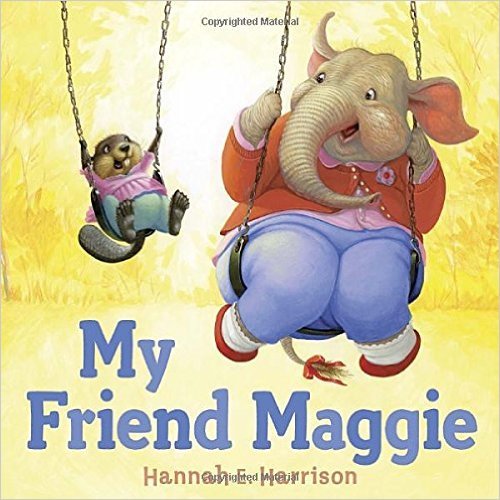
My Friend Maggie by Hannah Harrison is just a must-add in general, this picture book is great for theme, plot and just kindness overall.
Plot description:
Paula and Maggie have been friends forever. Paula thinks Maggie is the best—until mean girl Veronica says otherwise. Suddenly, Paula starts to notice that Maggie is big and clumsy, and her clothes are sort of snuggish. Rather than sticking up for Maggie, Paula ignores her old friend and plays with Veronica instead. Luckily, when Veronica turns on Paula, Maggie’s true colors shine through.
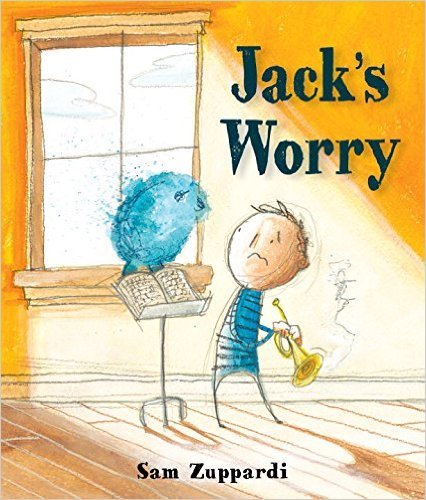
Another fantastic picture book to discuss problems and anxiety is Jack’s Worry from Sam Zuppardi. I love the illustrations of how Jack’s worry follows him around and how he ends up solving it. Many children would benefit from this book in their classrooms.
Plot description:
Jack loves playing the trumpet, and for weeks he’s been looking forward to taking part in his first concert. But on the morning of the big day, Jack finds he has a Worry. And his Worry starts to grow. Even when Jack’s mother calls him for a special breakfast, even when he hides under the bed or runs around the yard, his Worry follows him. Suddenly, when it’s almost time to leave for the concert, Jack finds it’s all too much. For anyone who’s ever been afraid of failing at something new, this book offers just what’s needed to shrink a Worry down to size.
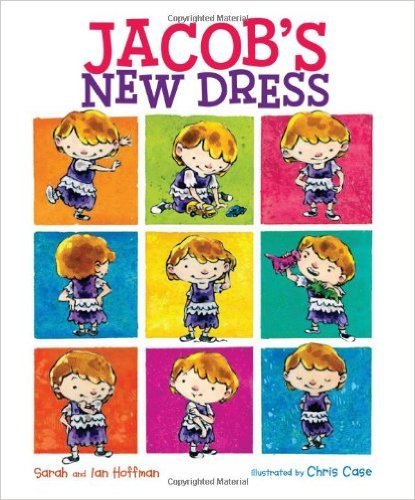
Jacob’s New Dress by Sarah and Ian Hoffman, illustrated by Chris Case. being yourself can be hard when you society will judge you but this book is a must add for any classroom.
Plot description:
Jacob loves playing dress-up, when he can be anything he wants to be. Some kids at school say he can’t wear “girl” clothes, but Jacob wants to wear a dress to school. Can he convince his parents to let him wear what he wants?
To see a list of all of our favorite books for many different things, please go here.
Filed under: being a teacher, books, picture books, Reading


November 3, 2016
Audience Needed – Silly Poetry Videos
Tomorrow my amazing 7th graders will start practicing their speaking skills through silly poetry performances. In 7th grade we take speaking pretty seriously, after all, being able to communicate well and with intent is something you will need to be successful in life.
While I give my students feedback, while they perform in front of each other, while they rate themselves, it just doesn’t add a lot of punch to their performances. This is where you maybe come in. Would your class or kids like to be our audience and leave us some feedback?
It is really quite simple; sign up below by filling in the form and wait for an email from me next week. You will be given a link to a class’ video and also a survey. We will ask you to tell us how we did, how our eye contact was and whether we have things to work on. That’s it. The feedback you give will help my students grow as public speakers.
Filed under: being a teacher, global, Reading


November 2, 2016
My ITEC Ignite – The Least We Can Do
I swore after ISTE 2015 that I would never do another Ignite. They are so hard to do. They are personal. Nerve-wracking. Sometimes push me to almost throw up as my nerves get so messed up that I am not sure how I will even stand to do it. And yet…I have seen powerful ignites. I have seen what the power of five minutes can be. I have seen the real impact that someone speaking for a mere five minutes can have on the children we teach.
So when I was asked by ITEC to do an Ignite, I was torn. Say yes and spend hours tormenting myself, or graciously decline feeling like I have done enough. I said yes. I then was stumped. What do you do an Ignite on when you already feel like you pour your heart out…
The answer came to me a morning when Facebook reminded me of just how far we have come. Of just how lucky we are to have the life we live. When a picture of Augustine, our youngest daughter born almost 10 weeks early, popped up in my feed I remembered just how terrifying it is to have a premature baby. Just how much it changes you. Just how much ut shapes your future life as an educator, whether you mean for it to happen or not.
So with Augustine in mind, but also the job I love so much, I present to you my ITEC Ignite. I have published the script already but here it is live…Thank you so much to the Dads in Ed podcast for inviting me to do one. Here is a link to see it
//www.ytcropper.com/embed/7R581a9b2a0bd7d/loop/noautoplay/ via ytCropper
Filed under: being a teacher


November 1, 2016
A Quiet Moment
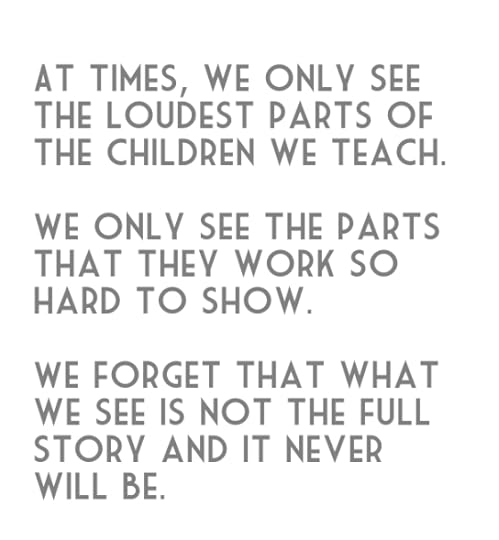
Life is full right now. Full of so many wonderful things. Full of so many privileges, but also challenges, things that will make me grow as a person, as a teacher, as a human being trying to be a better human being. One of my privileges is to get to teach a class with some pretty incredible kids in it. They are bouncy, creative, loud at times. Sometimes they need reeling in that can take more than few minutes and yet every day as they walk out, although I am a little bit tired, I cannot wait for them to come back.
Today, the day after Halloween, I did not know what to expect. After all, one child had declared to me the day before that really all school should just be cancelled the week of Halloween. As a mother witnessing my own children’s lethargy this morning, I had to wonder what the day would bring. Would these boys even be ready for anything? Would it be a day of wasted time? As the day grew on and the kids seemed to wake up from their tiredness, I started to ponder just how loud the end of the day would be? Where would the crescendo hit?
The bell rang, the kids arrived and we settled in as we so often do around our table, ready to do something together. I pulled out my Demonstration Notebook (thank you Kate and Maggie Roberts for this idea). I had the lesson ready on how to stretch out theme, for the kids to try so we did what we do so many times in a week. We read a picture book.
Yet this time, when I chose it I knew I needed a powerful punch. I knew that if I were to counteract the craziness of the day after Halloween then it would have to be an extraordinary book, so I read aloud the picture book Ida, Always. This book with its happy polar bears on the cover is one of the best I have read this year. It also happens to have an easily identifiable theme. As I read the book, my emotions got the better of me. You see, my middle daughter’s name is Ida as well. She is four. She is not a polar bear, nor is she sick, and yet, every time I read this picture book, I cry. And not just misty-eyed maybe there are tears in there but still turning pages, no, tears down my cheeks, having to stop the read aloud. I thought I could make it today, after all, how often do you cry in front of your student. I thought wrong. At first, the boys clearly did not know what to think of their otherwise happy teacher sitting there with tears. And yet as they starred in silence, I started to see their own eyes and the tears that were forming there.
These kids. These wonderfully rambunctious kids. These kids that sometimes make me feel like I am not doing enough and will never be enough. They cried too. Not all, but some. They sat there in solidarity with me. They asked why this book was so emotional for me. And as I explained they all nodded, they got it. One kid took the book from me and continued to read aloud.
As the book ended, we discussed why sad books are okay at times. No one laughed. No one pointed a finger. No one called each other a name. Instead we just shared the moment, shared this vulnerable moment and then went on with our lesson.
At times, we only see the loudest parts of the children we teach. We only see the parts that they work so hard to show. We forget that what we see is not the full story and it never will be.
In our moment today I was reminded not just of the power of picture books, but of the power of vulnerability in our classrooms. How for students to dare to share who they are as human beings, we must also show ourselves. Even if that means stopping our read aloud because we cannot form the words.
I don’t know if we will ever cry together again over the fate of a polar bear, but it doesn’t really matter, because today we did, and today we grew. Not further apart but closer together. Sometimes those moments come right at the very right time. Sometimes they come when we least expect them.
I am currently working on a new literacy book. The book, which I am still writing, is tentatively Passionate Readers and will be published in the summer of 2017 by Routledge. I also have a new book coming out January, 2017 called Reimagining Literacy Through Global Collaboration, a how-to guide for those who would like infuse global collaboration into their curriculum. So until then if you like what you read here, consider reading my book Passionate Learners – How to Engage and Empower Your Students. Also, if you are wondering where I will be in the coming year or would like to have me speak, please see this page.
Filed under: Be the change, being a teacher, Reading


October 28, 2016
More Picture Books to Spark Empathy
Last year I published a post on 10 picture books that spark empathy. It turns there are many more than the original 10 highlighted. With the world we live in, we all need a little more empathy in our lives and in our classrooms. Picture books offer us a way to start the conversations and to plant the seeds. So today I offer you an updated list, the original 10 can still be found toward the bottom. Remember; picture books are for all ages and the power of these cannot be disputed.
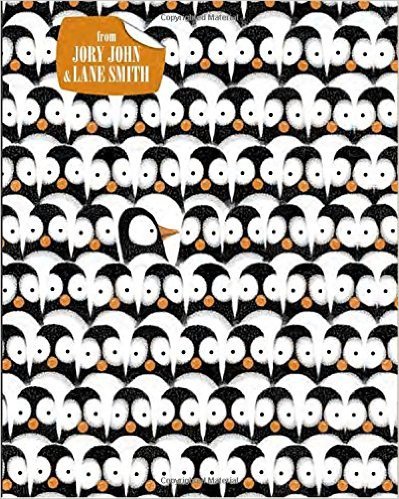
Penguin Problems by Jory John and Lane Smith follows a little penguin that just wants to be understood. He doesn’t want to follow the crowd of the other penguins and in fact, constantly complains, until someone puts things into perspective for him.
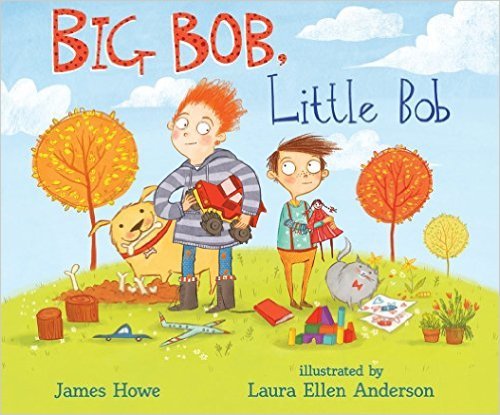
Big Bob, Little Bob by James Howe and Laura Ellen Anderson is a great stry of what happens when a new boy moves into the neighborhood and doesn’t quite understand the boy who shares his name.
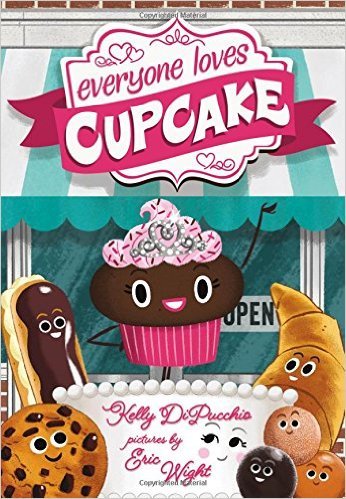
Everyone Loves Cupcake by Kelly DiPucchio and Eric Wight is the story of Cupcake who just wants to be perfect. Yet being perfect is exhausting. Will her friends accept her for who she is?
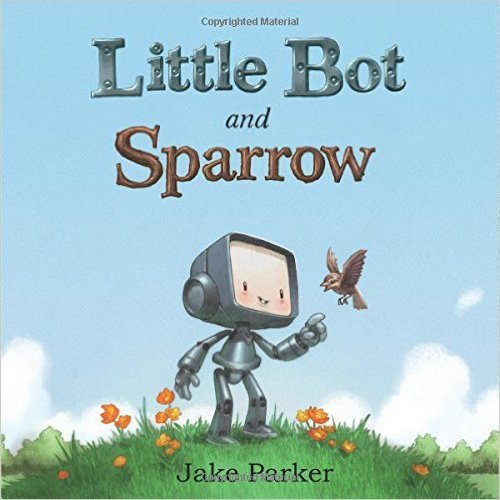
Little Bot and Sparrow by Jape Parker follows Robot in his quest forfriendship after being discarded as old. What a great tale of how we do not have to be the same to be friends.
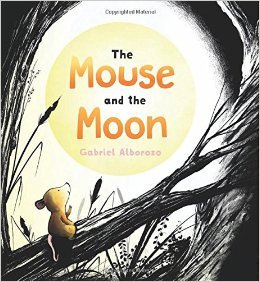
The Mouse and the Moon by Gabriel Alborozo follows Mouse who is very lonely. One day he starts to speak to the Moon and makes a surprise friend in the process.

Samson in the Snow by Phillip C. Stead follows a woolly mammoth after his chance encounter with a little bird. Even though they are so different, Samson cannot stop worrying about the bird when a snowstorm hits and he sets out to find him.
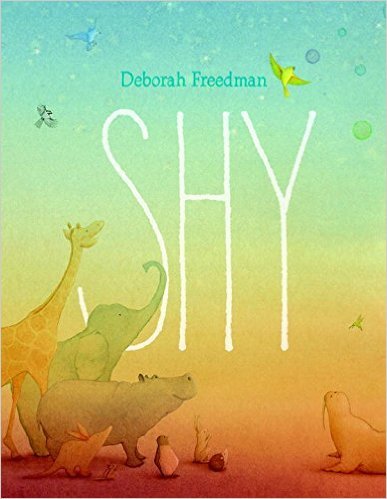
For all the kids who identify as being extremely shy, Shy by Deborah Freedman is a beautiful tale of finding a friend and finding courage.
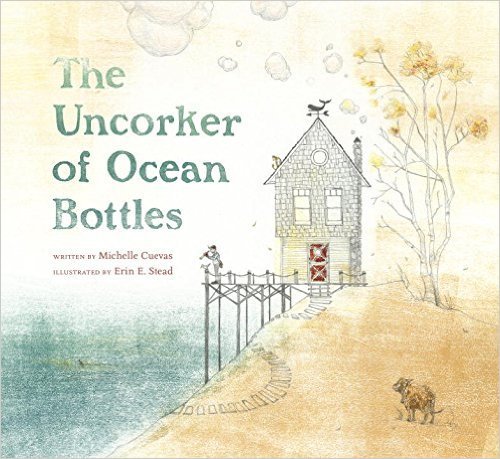
The Uncorker of Ocean Bottles by Michelle Cuevas and Erin E. Stead is a tale that speaks of loneliness, of taking a chance, and of finding your place. How many of us cannot relate to the feeling of being lonely?
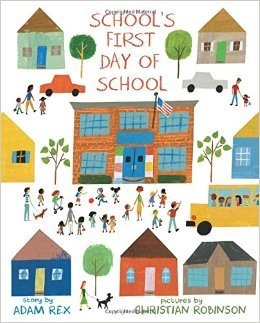
School’s First Day of School by Adam Rex and Christian Robinson is all about a school and how nervous it is before the kids show up. What a great way to discuss how we can make newcomers feel welcome.
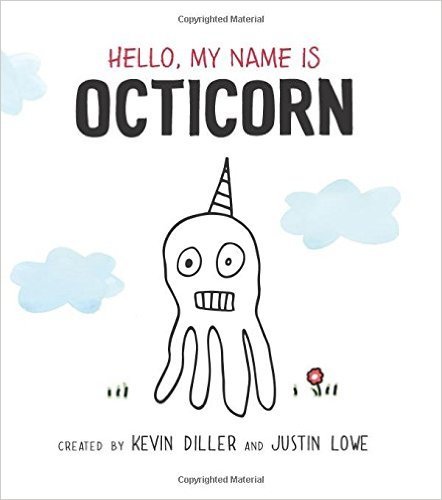
Hello, My Name is Octicorn by Kevin Diller and Justin Lowe who feels just a little bit different. So is being different a good thing or a bad thing?
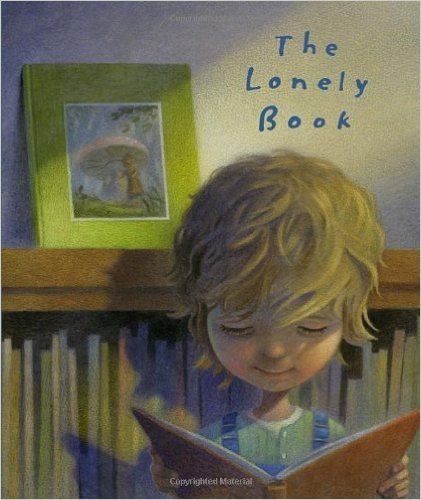
The Lonely Book by Kate Bernheimer and Chris Sheban talks about loneliness as well. When a new book no longer is new, who will read it any more? Great way to use metaphors to get kids to talk about being lonely.
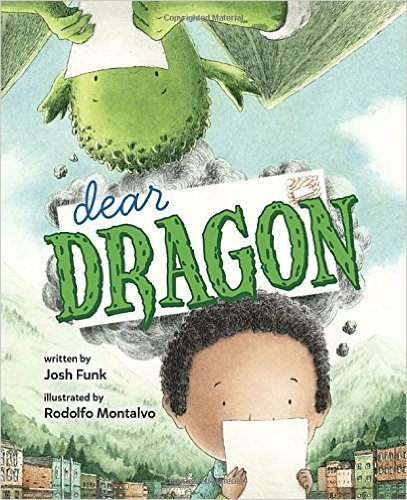
Dear Dragon by Josh Funk and Rodolfo Montalvo speaks of an unlikely friendship between two different species. It begs the question; must we be the same to be friends?
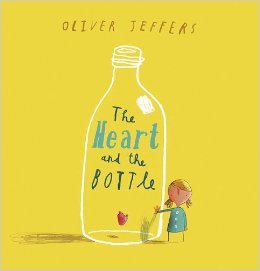
The Heart and the Bottle by Oliver Jeffers is about grief and locking your heart up when it is too hard to have it vulnerable. Yet is that really the way to experience life?
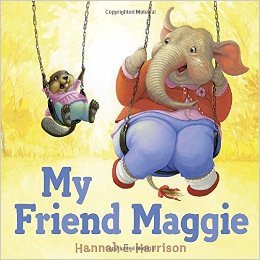
My Friend Maggie by Hannah E. Harrison is a favorite of mine for many reasons. It is such a stellar book for talking about what being true friends really means and how we can stand up for the people we care about.
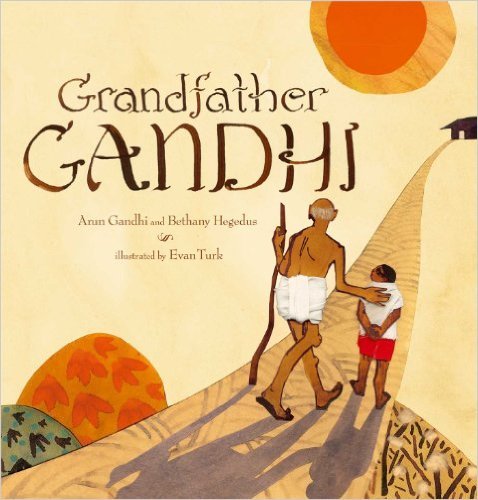
Grandfather Gandhi by Ann Gandhi, Bethany Hegedus and Evan Turk takes the teachings of Gandhi and makes them kid friendly. In this book the message is how to turn moments of darkness into light instead.

Jack’s Worry by Sam Zuppardi is a fantastic book to start discussion of anxiety and worry. With anxiety on the rise in our classrooms, this book is one that many kids (and adults) can relate to.

Be A Friend by Salina Yoon is the story of Dennis and how he does not find a friend who accepts him for who he is until he meet Joy. I love the message of how being different does not mean you have to change to find a friend.

Bully by Laura Vaccaro Seeger is a fantastic illustration of what happens when we bully. This is a book that is sure to spark discussion no matter the age group.
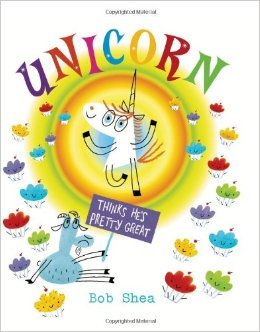
Unicorn Thinks He’s Pretty Great by Bob Shea is a must-add to any picture book collection. The tale of Goat and how he thinks Unicorn is a braggart until he finally gets to know him is one that kids will love.
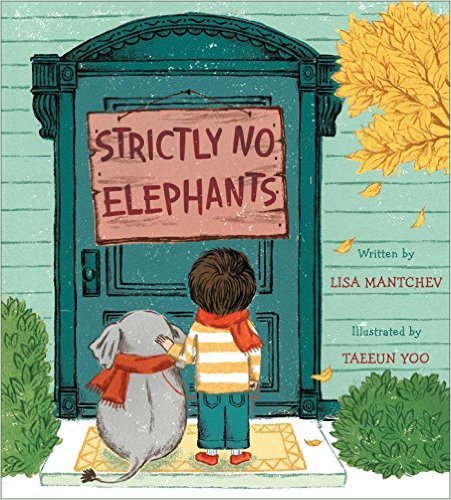
Strictly No Elephants by Lisa Mantchev and Taeeun Yoo is one that I think many kids can relate to. With the story of a child who is excluded and how he finds his own group, we can use this to open up discussion about accepting others.

Better than You by Trudy Ludwig is the story of the friend that brags all of the time, in the process putting his neighbor Tyler down. It explores friendship dynamics and how we can make each other feel bad or good.
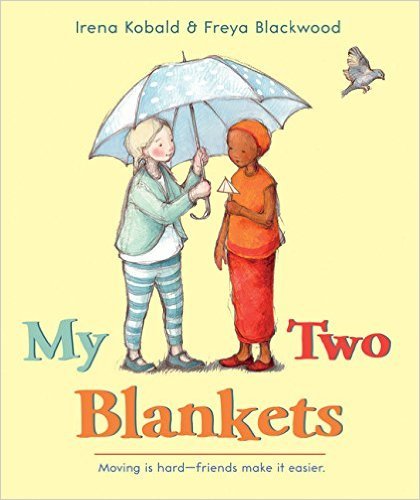
My Two Blankets by Irena Kobald and Freya Blackwood speaks to how hard moving is, but also about finding a new friend.
The Original Ten:
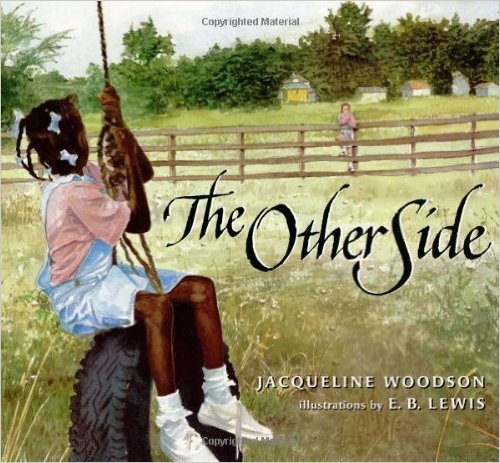
I have long loved The Other Side by Jacqueline Woodson for its straightforward story of two girls living on either side of a fence and yet many miles apart. For some of my students this is territory they have not gone into yet, so the conversations about race, our history, and even what is happening now in our world abound.
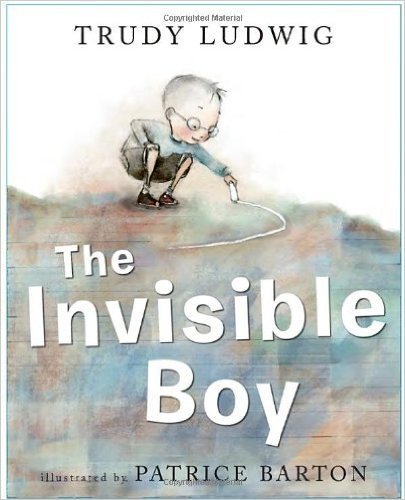
I don’t remember how I came upon The Invisible Boy by Trudy Ludwig. My guess is that someone shared it on their blog, so thank you to them. This story so beautifully encapsulates what it means to feel invisible and every time I have used it with students it has led to deep conversations. We read this more than once so we can pay attention to the illustrations as well.
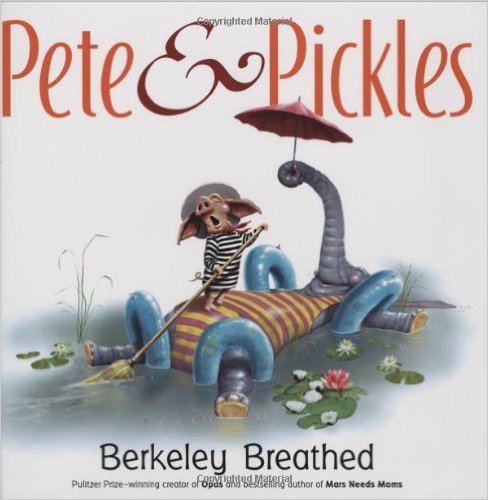
Students immediately fall in love with Pete & Pickles by Berkeley Breathed for the illustrations but then come back again and again for the story of an unlikely friendship between a pig and an elephant. This is a must read aloud at any age. (ANd truly they all are).
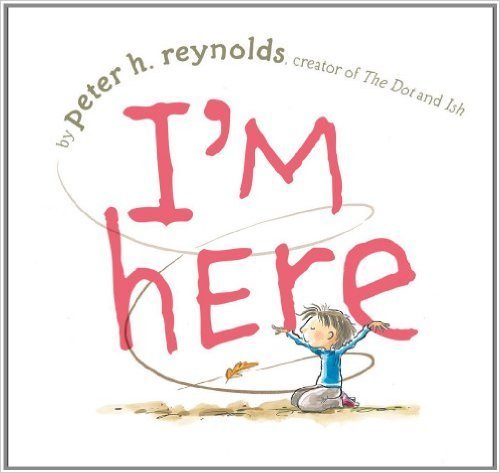
It has been established already that Peter H. Reynolds is a creative genius. I have loved all of his books since the first time I read them. This book, I’m Here, is one that doesn’t get a lot of attention standing next to The Creatrilogy, but it should. It’s eloquent story about a boy who feels so all alone is one that will settle into the hearts of students.
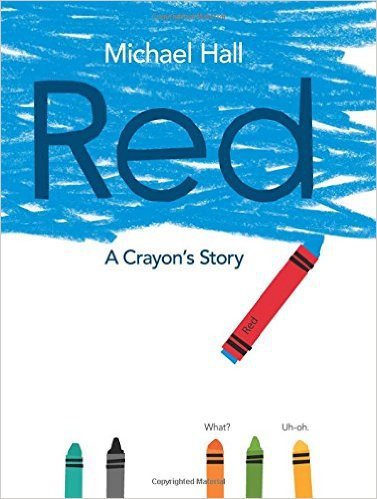
Thea, my kindergartner, came home and told me that I had to get this book about a big red crayon. Okay…. I thought. But she was right, Red – A Crayon’s Story by Michael Hall was one that I had to read aloud to my 7th graders. And then we had to discuss what it meant staying true to one’s own nature as well as facing the pressures of others. I swear this book was written for middle schoolers and not young children secretly.
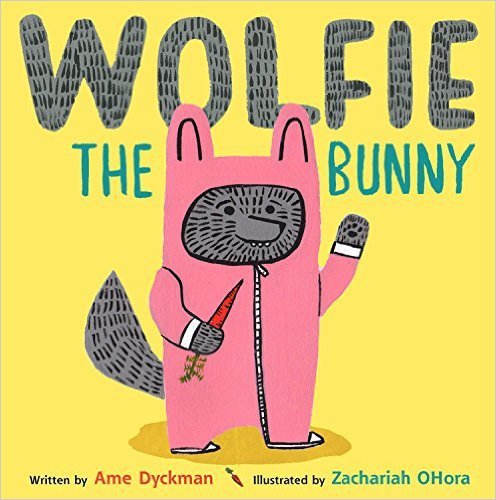
It is a celebration in my life whenever the talented Ame Dyckman comes out with a new picture book and Wolfie the Bunny was definitely a cause for celebration. This book about assumptions and what they can lead to has not only made my students laugh outloud, but more importantly, has led us to question our own assumptions about others.
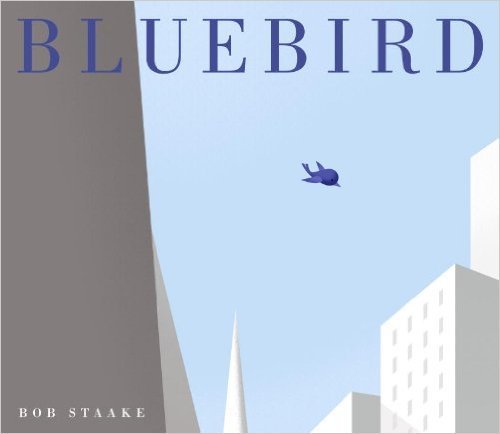
I have Bluebird by Bob Staake on many favorite picture book lists, and there is a reason for that. The shock on my students faces when we get to that page. The questions, the discussion when I step out of the way are priceless. This is a wordless picture book which also means that my students love interpreting the ending.
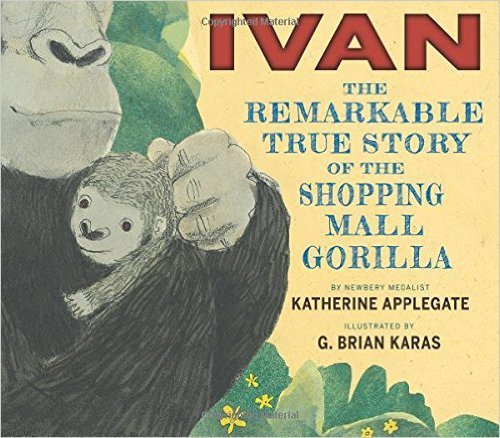
I cried when I read aloud The One and Only Ivan so it only seems fitting that I cried when I read out loud Ivan: The Remarkable True Story of the Shopping Mall Gorilla by Katherine Applegate. My students love to ask questions after this book, they love to talk about their own animals, what they would do to save others.
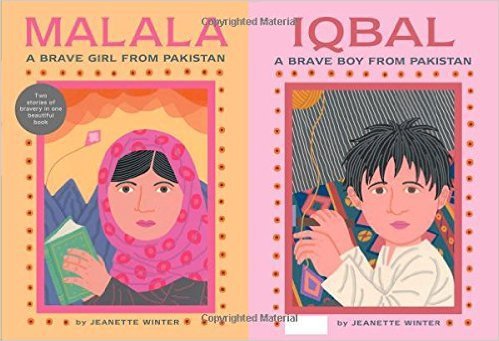
I read this book out loud to all 5 of my 7th grade classrooms. It was astounding how similar the reaction was; disbelief, outrage, questions and perhaps a tear or two shed by me. This story Malala, A Brave Girl from Pakistan/Iqbal, A Brave Boy from Pakistan by Jeanette Winter is one that will stay with you for a long time. This is sure to elicit conversations and calls for action.
I always seem to cheat on these posts and never stick to just 10, so for my 10th pick I will give you several instead. All of these are worthy of being read aloud and discussed. We need more empathy in this world, I am so glad these authors give us a chance to do just that.
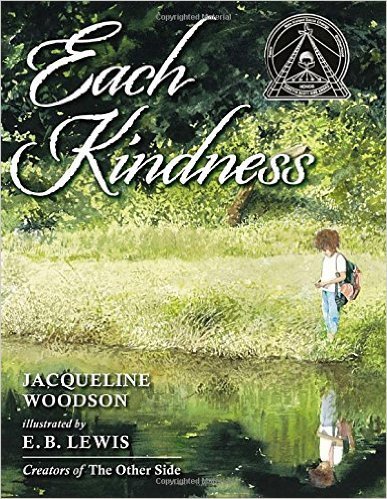
Each Kindness by Jacqueline Woodson
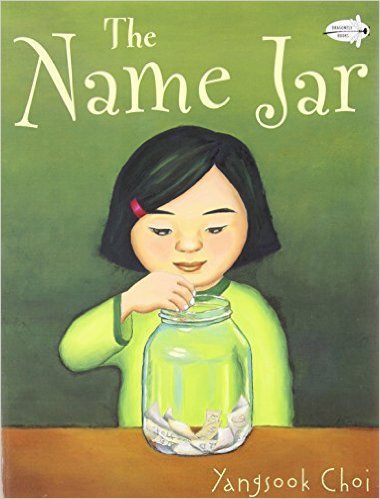
The Name Jar by Yanksook Choi (Having a name that no one pronounces correctly in the USA really makes me love this book even more).
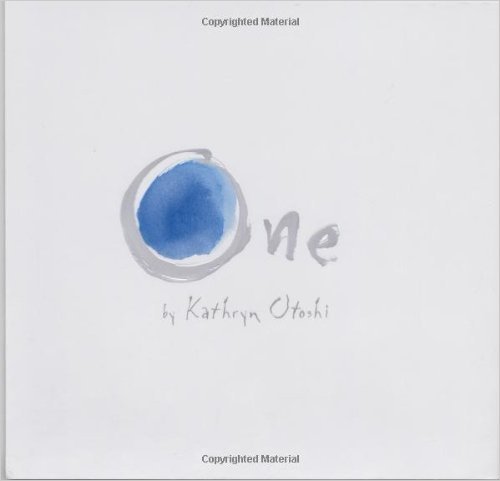
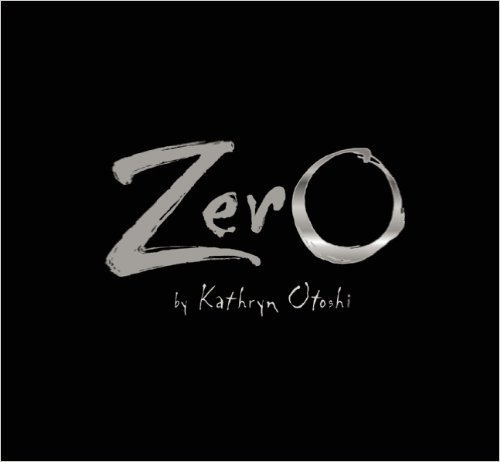
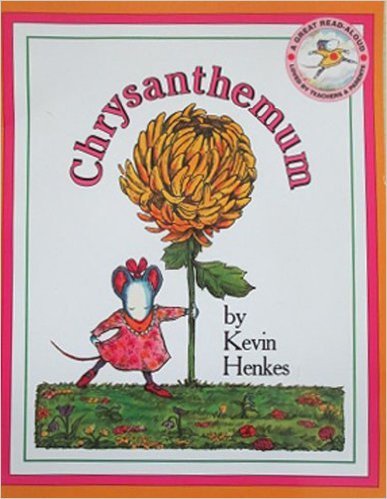
Chrysanthemum by Kevin Henkes.
Which ones would you add to the list?
Filed under: being a teacher, Reading


October 25, 2016
Planting a Seed – Our Project on the Refugee Crisis
I grew up in a home that had a newspaper on our table every morning. Laid out for us kids to see, we grabbed the comics first, then the Danish news. I was a teen when I started reading the international news. Being aware of the world was something that was expected of us, after all, Denmark is a small nation. We read the paper, we listened to the radio, we watched the news. Not always fully attuned but always aware of at least some of the bigger things happening in the world beyond our own.
Being a globally aware and invested teacher is something I have tried to live and breathe for many years now. After all, the Global Read Aloud was created with the idea of making the world not only smaller, but also more interconnected to create more empathy and kindness. My students have therefore in varying degrees always brought the world in, been a part of projects that involved others and tried to know more about the outside world than when they came in. Working on a team with an incredible geography teacher has only made my job easier.
So this year as my English standards starred me in the face a small idea started to form, a seed began to grow; what if instead of “just” doing summaries, what if instead of “just” having an opinion, I was able to structure an inquiry project into something that I have been following myself; the Refugee Crisis? What if we created a two-week experience where the students got to learn at their own pace with the end goal of having an opinion? With that, I started to plan…
We would have two weeks roughly of work time, with time dedicated every single day after we do our 10 minutes of independent reading. Students could choose how they wanted to work and engage with the materials. I used a sheet that simply asked kids how they would like to engage with the learning and then crafted lessons based on this. I have used this approach in the past and it has worked pretty well, this time I should have been more diligent with using it though after the kids filled it out. However, that being said, kids were also good at reaching out and asking questions, as well as use each other for help. I did promise the students that I would only do one whole class lesson; how to write an opinion piece using the MEL-Con format, and I kept my word. My students have asked me to do less whole class teaching and I am adhering to that as I can help them better in small groups anyway.
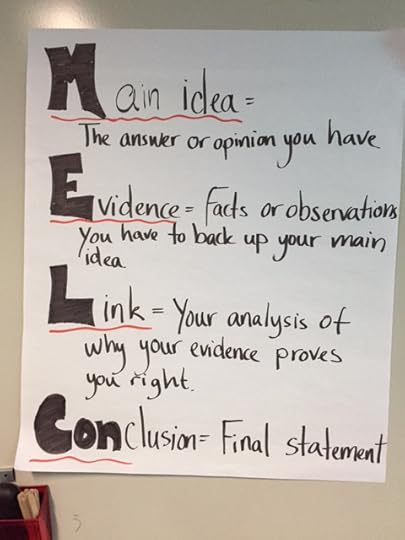
Our anchor chart for the MEL-Con format
We first needed a question, one that would give us a focal point but would not be shaped or tainted by my opinion, after all, I did want the students to come to their own conclusion. So our guiding question became ; What should America’s role be in the refugee crisis? This was what the students would work toward and discuss.
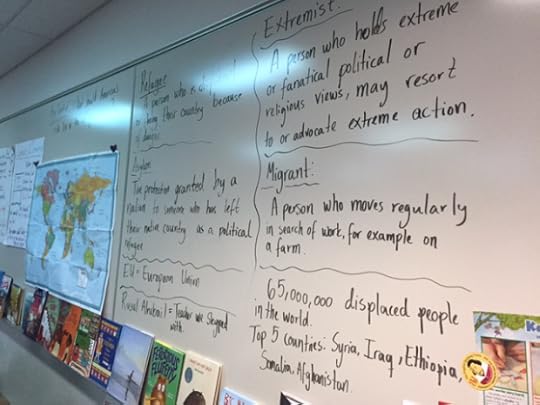
We created a running word wall as student questions came up.
I knew I needed texts to start with; thank you Newsela for your text-sets, you saved me so much time. So I pulled nine different texts that highlighted different aspects of the crisis, printed them at three different reading levels and told the students to choose three of them to read at least. I also made all of the texts available as a folder in case they lost their copies.
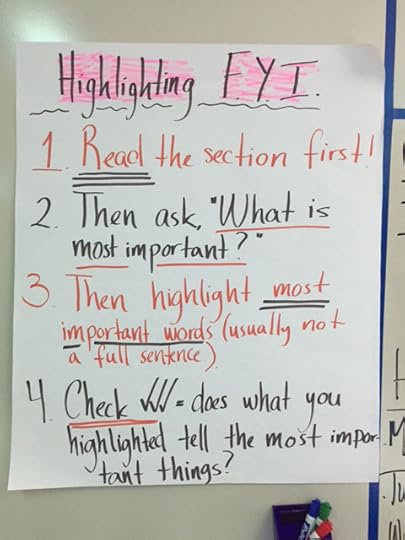
Another teaching tool for students to reference
I also wanted students to watch videos; I created a padlet with different short videos that would be appropriate for 7th graders and also less than 20 minutes. Students were asked to watch at least one, but could do more if they wanted to.
I then crossed my fingers and asked on Twitter; would anyone Skype with my students about being a refugee? I am so grateful for the response. Three of my classes were so incredibly lucky to Skype with the incredible Rusul Alrubail,she graciously and courageously shared her story of how she became an Iraqi refugee at a young age. To say my students were moved by her story would be an understatement. Yet, the kindness of strangers continued. Another teacher, Emily Green, from Michigan asked her students, some of them refugees, if they would create a small video for my students. Last night, I received three different videos from her courageous kids sharing their stories. Today as I played them for my students, you could have heard a pin drop.
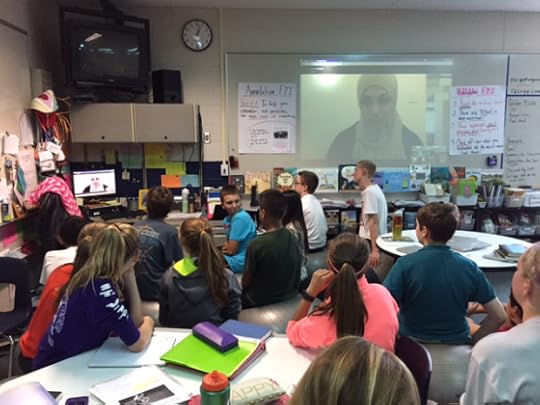
So for the past two weeks, my students have annotated the texts (using their own systems rather than ones created by me) for anything that stood out, they have written a summary on one article, and they have crafted an opinion on the guiding question, as well as craft an opinion piece based on all of their newfound knowledge.
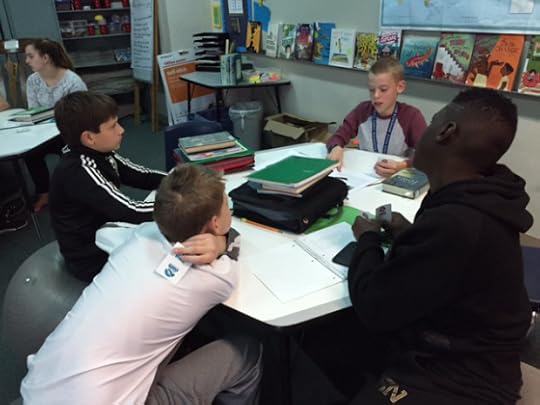
In some classes we started in small group before we went to whole class discussion.
Today, as we came together as a group to discuss what we have learned and what our opinion is, I sat back behind the kids and watched them practice their discussion skills. As kids navigated the ins and outs of adult unmoderated conversation, I couldn’t help but feel just the tiniest bit proud. Yes, they were discussing, yes they were listening to each other, but that was not the only thing I observed. I observed kids who all of a sudden understood just how vast of a nation we live in. Kids who now know where Iraq and Syria are. Who know tales of children passing through Europe unattended as they try to reach freedom. Of people who never wanted to leave their homes but were forced too. Of what we can possibly do as a nation but how many hurdles there may be to making any decisions. I also saw kids who started to understand that for some reason they equate refugee with terrorists. Who thought 10,000 refugees is a large number but have since discovered it might not be. Who know that we need to help but are not sure just how to do that.
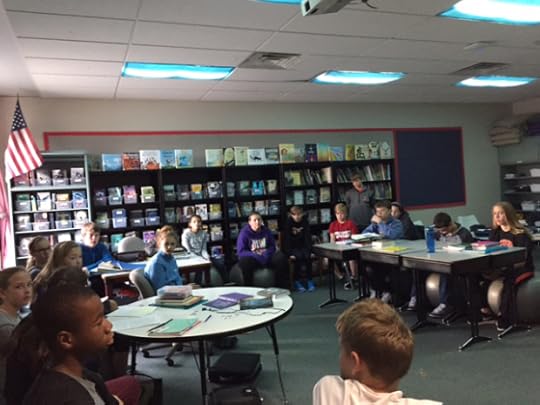
Discussing as a whole class
I didn’t set out to shape the opinion of my students, that is not my job as their teacher. Instead I wanted to create an opportunity for them to form an opinion on fact rather than hearsay, on research rather than rapid talk. I know that some believe America should do more and others think we do too much already. I know that for some they don’t really care either way. But I also know that by giving them more control over their learning, by giving them tools to start with, by creating a guiding questions and then by bringing others in via Skype and YouTube that we have created an experience that matters. That together we now have this piece of the world that ties us together and that will continue to crop up through the year.
Yesterday, a child asked me what the deal was with Mosul and weren’t they bombing over there? A child that two weeks before was not even sure that Iraq was a country or what refugee meant. That child had heard on the news that fighting was starting up again and now wanted to know more. As teachers of literacy we have incredible opportunities to bring the world in, to help our children find their opinions, and to create experiences that connect us with other human beings. I wrote a book on how to do just this, not for the sake of the book, but for the sake of making this world a better place.
I ended our discussion time today with the following words; “My job is not to make you think a certain way, my job is to make you think. So whatever your opinion may be, all I ask of you is to have one based on fact, rather than what others believe. Keep your ears open and ask a lot of questions. That is the least you can do as the future of this country.”
As teachers, we can bring the world in when it makes sense. To make it matter more than just getting through the year or working off our checklist. The year has just started and yet we have so much more to discover about the world. I cannot wait where our learning takes us next.
PS: If you would like to see my folder of resources, go here, some of it is loose.
I am currently working on a new literacy book. The book, which I am still writing, is tentatively Passionate Readers and will be published in the summer of 2017 by Routledge. I also have a new book coming out January, 2017 called Reimagining Literacy Through Global Collaboration, a how-to guide for those who would like infuse global collaboration into their curriculum. So until then if you like what you read here, consider reading my book Passionate Learners – How to Engage and Empower Your Students. Also, if you are wondering where I will be in the coming year or would like to have me speak, please see this page.
Filed under: Be the change, being a student, being a teacher, student choice, Student dreams, student driven, student voice





